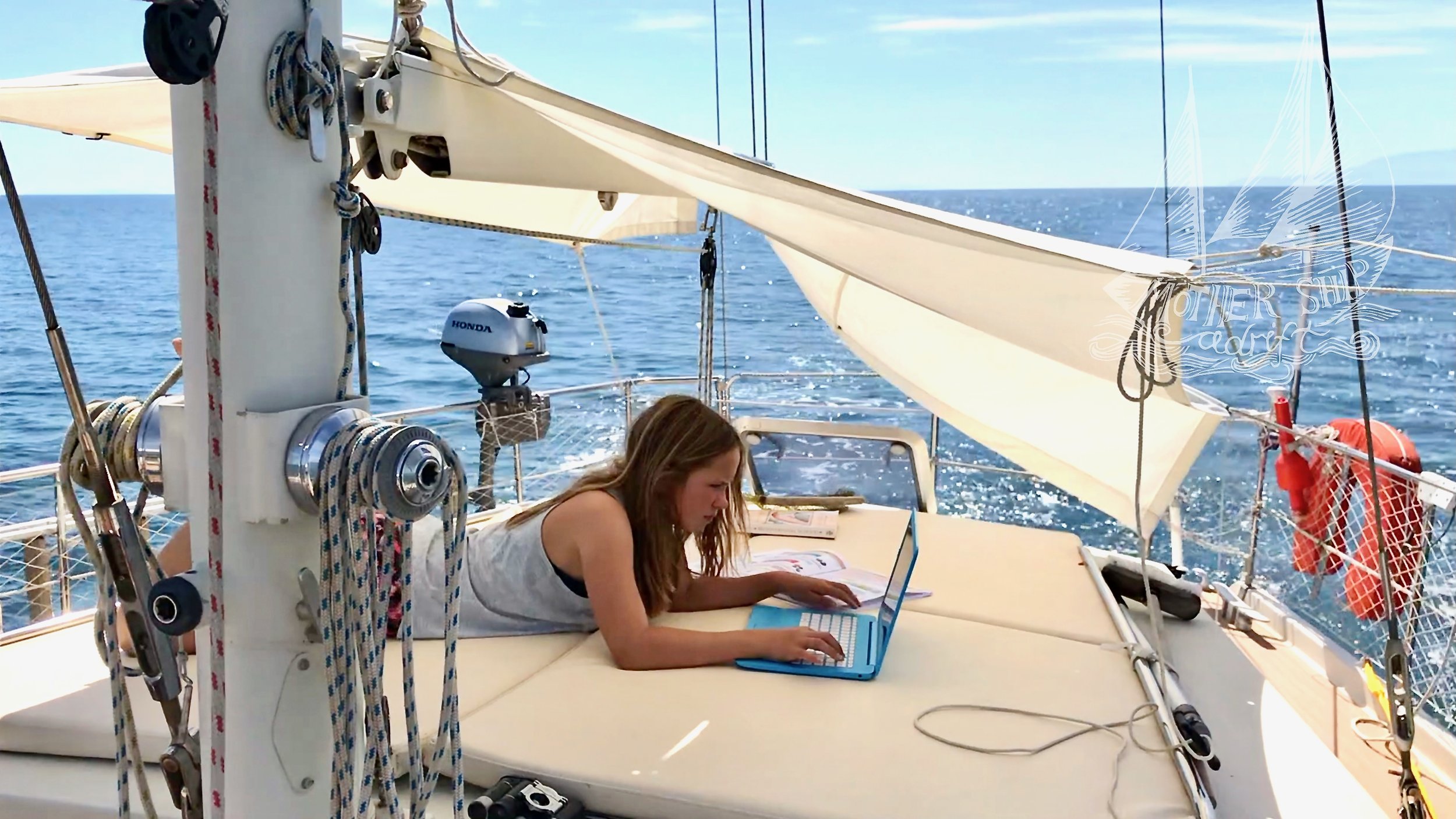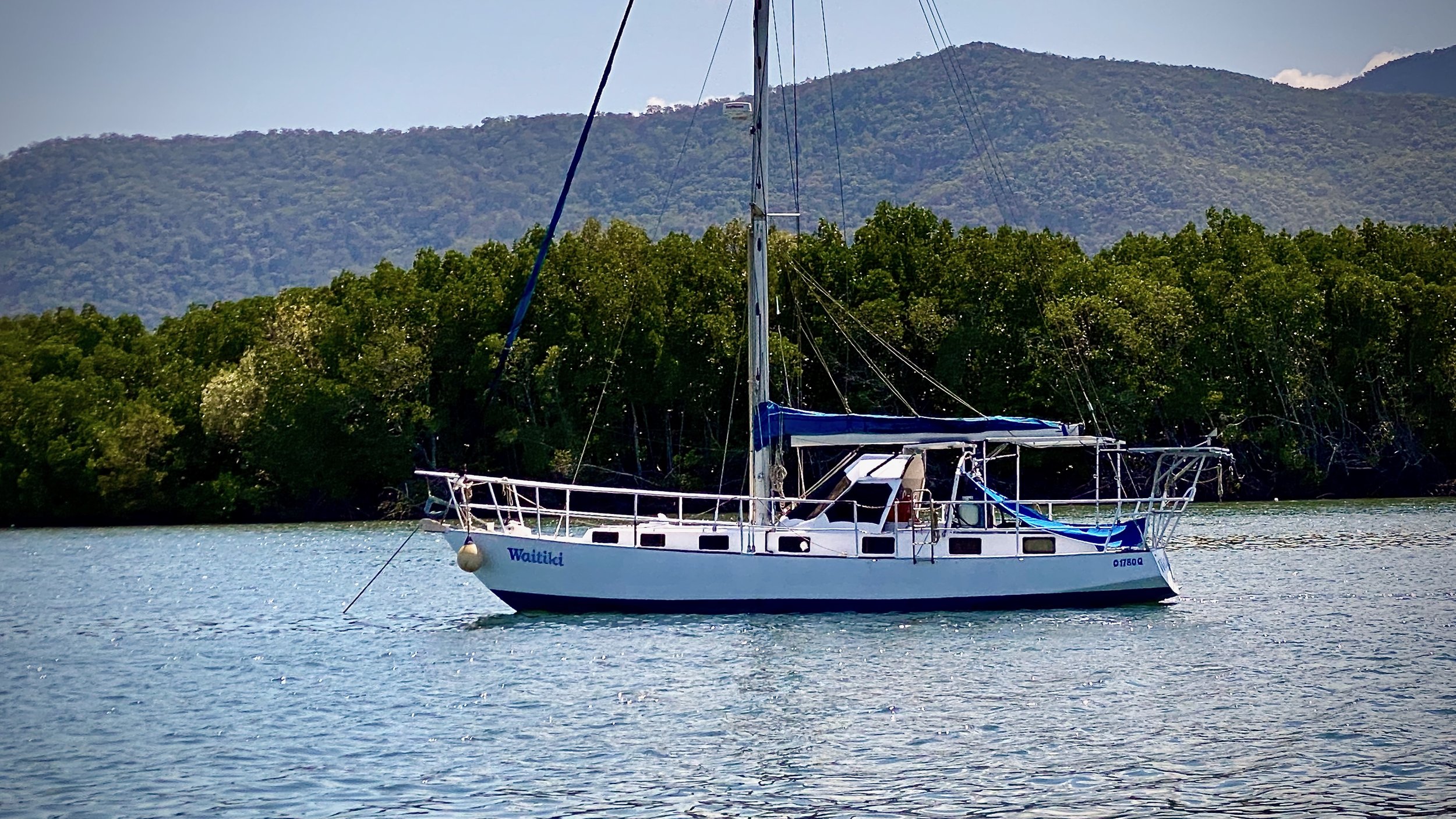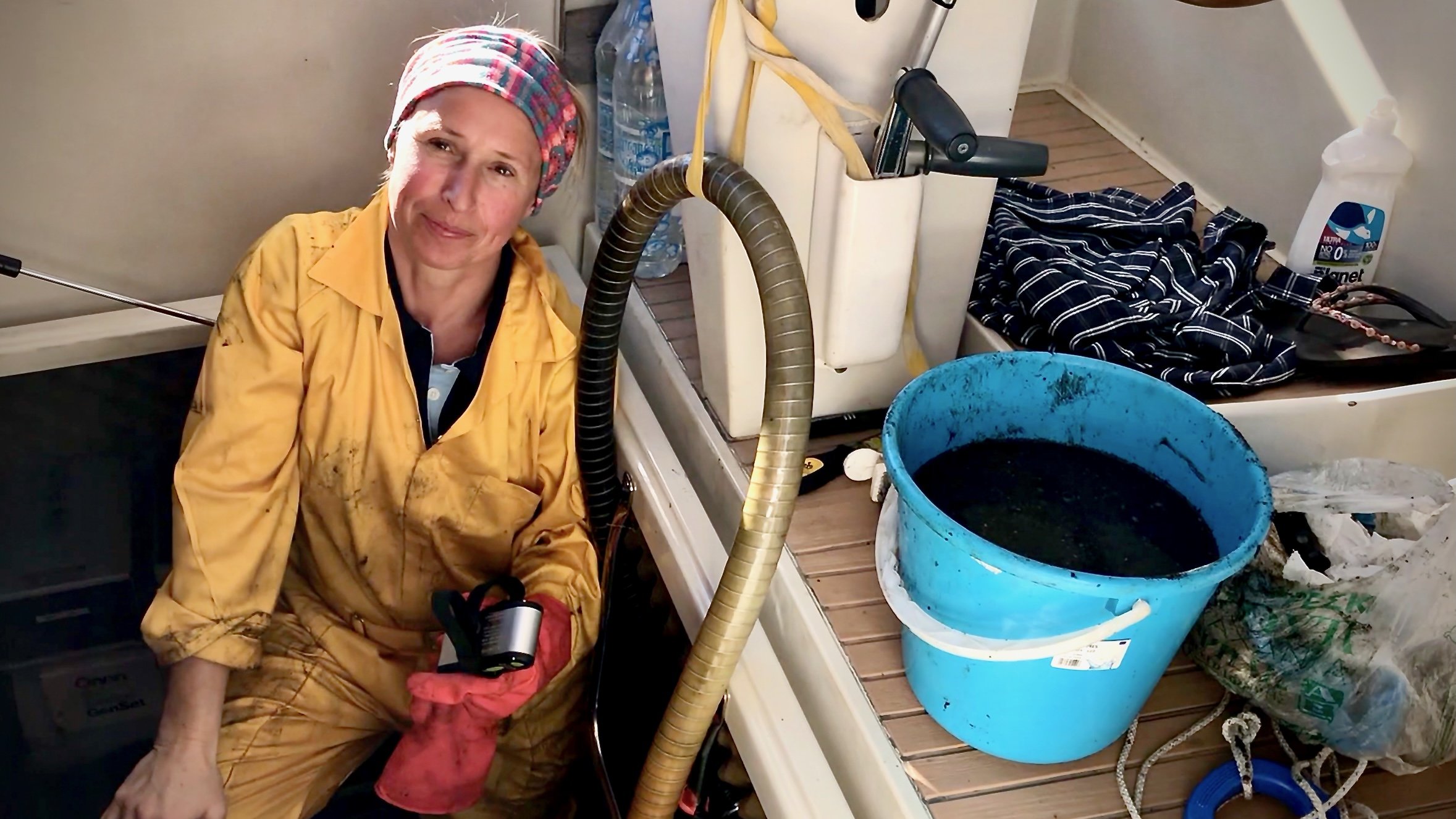Setting a Sail Away Budget
01-03-09
“I want a boat that drinks six, eats four, and sleeps two. ”
Setting an accurate boat buying budget isn't as straight forward as you might think
Yacht Porn!
We’ve all been there. Scrolling through real estate listings and gazing at sprawling estates when you can barely afford a bedsit above a kebab shop. In the same way, drooling over 60-foot luxury yachts on Yachtworld.com at 3 a.m., when your bank account suggests something more... modest, is only going to leave you feeling inadequate and frustrated. This my friends, is why it’s called yacht porn!
A Mediterranean sunset looks just as glorious from the deck of a 26-foot Sadler as it does from a 60-foot Sunbeam. If you're serious about seeing that sunset, you need to get real about what you can afford to get you there. It’s not the size of your boat, it’s what you do with it that counts!
A Mediterranean sunset looks just as glorious from any deck - Mallorca, Balearic Islands, Spain.
But this isn’t just about buying a boat; you’re investing in a floating world that’ll be your playground, classroom, and home. Think of it as adopting the highest-maintenance member of your family, a boat will demand constant attention, have endless quirks, and it will, without fail, fall apart at the most inconvenient moments. But unlike a member of the family, a sympathetic chat over a cup of tea won’t fix it, you’ll need to dip into your wallet for some serious (and expensive) therapy: maintenance.
New vs. Used Boats
Now, should you buy new or used? New boats come with all the latest tech, better fuel efficiency, and warranties, but they depreciate faster than your enthusiasm for an early morning anchor watch. Older boats, especially pre-2000 models, often have sturdier builds and are more suited for heavy cruising. They might have that rugged charm, but they also come with more quirks, a few skeletons in the bilge, and the odd haunting mechanical issue.
The smart money goes for a well-maintained older boat with modern upgrades. You get solid construction with updated gear, and these boats often come with a loyal tribe of owners eager to pass on the wisdom of their costly mistakes. After all, they’ve probably spent years fixing the same broken bits you’ll encounter. It’s the perfect solution for a long-term cruiser.
The smart money goes for a well-maintained older boat with modern upgrades. Cairns, Australia.
Production Boats: Cheap and Cheerful or Costly Mistake?
Cheap production boats are built for coastal cruising, not taking on the open ocean. Sure, they look good on the outside, but peel back the shiny bits and you’ll find corners cut, compromises made, and potential issues that can bleed your budget dry. The cheapest boat in any class is often built to a price point, not a quality standard.
Then there are the ex-charter boats. Originally designed for a lifespan of about five years, before they begin to depreciate. They might look sparkling with their airy interiors, but they’re like rental cars, fine until they’re not. Maintenance costs rise steeply after about five years, which is why charter companies offload them before they become financial unfeasible. If you are tempted by an ex-charter boat, expect a few.. surprises. I have many friends in the charter world and worked for a few companies myself, and trust me, what you read in the online description rarely tells the full story.
That said, if you’re planning on bobbing around sheltered bays with the family, an ex-charter production catamaran under 45 feet could be just the ticket and within budget.
Charter boats are built to last about five years before maintenance costs make them financial unfeasible. Frikes Bay, Ithica, Greece
Research Like Your Life Depends on It
Once you’ve set your budget, it’s time to narrow down your options. Make a shortlist of boat models and do your research. A good place to start is my previous post on popular blue water sailboats: https://www.mothershipadrift.com/posts/whatarethemostpopularsailboats
Yacht brokers, magazines, and YouTube channels will be helpful, but the real gold lies in owner groups, forums, and blogs. Boat owners may love their vessels, but they’re also more than happy to grumble about their shortcomings over a drink. In my experience, the price of a few beers at the local yacht club or marina unlocks a Pandora’s box of insight, wisdom and knowledge!
When you talk to these owners, be tactful. Instead of saying, “I hear your boat is rubbish at sailing upwind,” try, “What sort of angle do you get when sailing to wind?” It’s the kind of question that opens up a more useful discussion.
Every boat is a trade-off. Less living space might give you a bigger engine bay. More speed could mean less durability. Whatever model you care to mention, someone will claim they’ve seen one in a remote corner of the globe - a testament to its durability and suitability. But remember, all plastic floats, just not necessarily in the way you want it to.
All plastic floats—just not necessarily in the way you want it to.
Buying Second-Hand: Learn from the Previous Owner
A well-maintained boat at market value is far better than a "bargain" fixer-upper that will drain your savings, time and energy. When you negotiate, don’t just focus on cutting the price, sometimes it's smarter to haggle for extras like a year’s mooring fees, additional sails, or even a dinghy.
Take a hard look at what the previous owners have done. If you’re lucky, they’ve already installed key upgrades like Starlink, watermakers, solar panels, and lithium batteries. If so, jackpot. These are the kinds of upgrades that can save you a lot of hassle and money in the long run.
Don’t Forget the Running Costs
Boats are full of surprises, and not always the good kind. Regular upkeep is a given, but then there are the inevitable disasters: torn sails, engine problems, leaks that seem to come from nowhere. So, budget for it.
If you’re not planning on getting your hands dirty with DIY installations and repairs, double the price of whatever shiny gadget you’re eyeing up, for someone else to fit it for you.
If you’re not planning on getting your hands dirty with DIY, your maintenance costs will skyrocket. Lefkas, Greece.
As I mentioned in my previous post: "DeFCoNs 8 - Health and Insurance," https://www.mothershipadrift.com/posts/defcon9-what-about-health-care-and-insurance we opted to skip extortionate full-cover insurance premiums in favour of 3rd party cover and a generic emergency fund, covering both mechanical and medical mishaps. It’s saved us a small fortune over the years.
Our Story: The Budget Reality
Back in 2017, after a decade of saving and selling off everything that wasn’t nailed down, we had an overall budget of €200,000 and an emergency fund of €25,000. Not quite enough for the new boat we wanted without getting into debt, and financing a depreciating asset didn’t make much sense. So, we turned to the second-hand market.
We aimed for boats priced around €150,000, leaving the remaining €50,000 for upgrades, maintenance, and the inevitable surprises in the first year. Let’s just say we underestimated. We bought a fixer-upper, and soon our emergency fund was under siege.
We bought a fixer-upper, and our emergency fund was immediately under siege.
With a steady rental income of €1,500 a month from our home, we were in decent shape at the beginning, but as the world went sideways with COVID, inflation, and the cost-of-living crisis, things got tight. Fortunately, our Patreon supporters and YouTube ad revenue has helped us stay afloat. Literally.
Today, I’d recommend starting with a minimum average monthly budget of €2,000 for a family, just to cover basic living expenses. That’s our monthly budget, but to achieve this we live quite frugally, rarely stay in marinas, do most of our own maintenance, restrict tours ashore and have cut out visits home to the UK.
Visits home to the UK have become a thing of the past to stay within our budget. Gatwick Airport, UK.
Typical Boat Budget
Below is a breakdown of what buying and maintaining a boat might cost in the first year. It’s based on our own experience and provides a framework to avoid unexpected financial sinkholes.
Approximate Overall Budget: €200,000 (2017)
Annual Rental income from home: €18,000 (2017)
(For a more realistic 2024/25 figure, consider adjusting this up to €220,000 - €230,000, but we’ll stick with the €200,000 figure for now. Also, our income has increased from €18,000 p/a to approx. €24,000)
Purchase Price: €150,000 (€165,000 adjusted)
Maintenance & Upgrades (25%): €45,000 (€55,000 adjusted)
Closing Costs & Registration (1%): €2,000 (€2,200 adjusted)
Sales Tax / VAT: already paid on our EU-registered boat by the previous owner.
Pre-Purchase Survey: €2,000 (€2,500 adjusted)
Rigging and Sails (second year): €8,000 (€10,000 adjusted)
Boat Insurance: €3,500 (€7,500 adjusted)
Fuel: €1,500 (€2,000 adjusted)
Dinghy & Outboard (second year): €4,000 (without outboard) (€5,000 adjusted)
Safety Equipment: €4,500 (€5,200 adjusted)
Domestic / Maintenance Budget: €18,000 p/a (€24,000 adjusted)
Total Original Costs: €238,500 (2017)
Total Adjusted Costs: €254,400 (2024)
As you can see, we were way over budget and had to dip into our emergency funds in the first year and juggle a few costs into the second. We also had to make some savings from our annual income. So, plan for surprises, because they will happen.
Other Budgetary Considerations:
Before Leaving Home: Cruising permits, visas, inoculations, storage, rental agent, travel etc.
People Aboard: Number of people aboard will impact budgets.
Maintenance Skills: Good DIY skills reduce labour costs.
Duration of Ownership: Depreciation should be considered.
Quality of Life Afloat: Meals ashore, use of marinas, and socialising habits.
Trips Home: Travel expenses for returning home.
Schooling: Books, laptops, online courses, tutors, exam fees etc.
Medical Insurance: We set aside a €25,000 ‘emergency’ fund.
Skipper Services: Delivery or systems training
Things like meals ashore, marinas, and socialising habits can add up. Preveza, Greece
And on a final note, I highly recommend starting your financial planning early and putting investments and financial assets in place before transitioning to life on a boat. Boat life is a full-time job, especially if you have kids and are constantly on the move. I have rarely met anyone who successfully manages to ‘work on the go’, though I’ll explore that topic in a later post.
In the meantime, bon voyage!
Next weeks we’re looking at sailing with your family.
If you want more straight-talking tales from life afloat, and information on setting a sailaway budget, then you’ll love our upcoming book. We're inviting early readers to join the pre-launch crew and get behind-the-scenes access as we wrestle it into shape. It’s honest, unfiltered, and occasionally useful. Sign up here to get involved, give feedback, and be part of something that’ll either be a bestseller or a brilliant cautionary tale.










